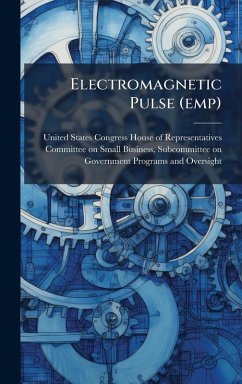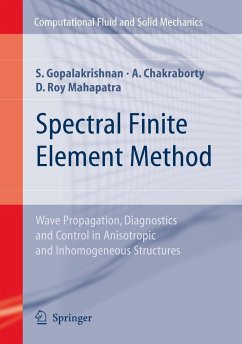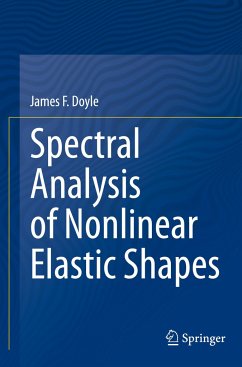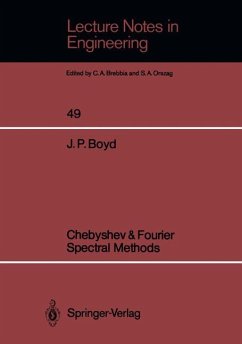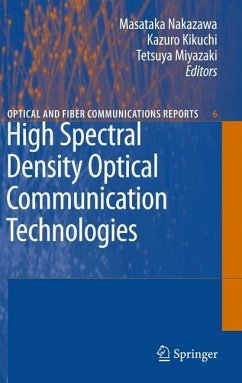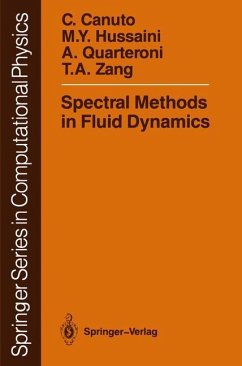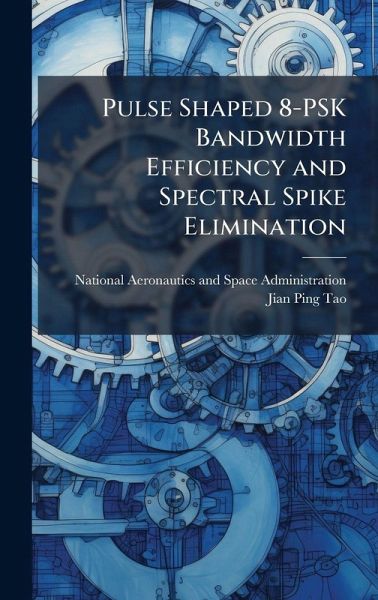
Pulse Shaped 8-PSK Bandwidth Efficiency and Spectral Spike Elimination
Versandkostenfrei!
Versandfertig in über 4 Wochen
28,99 €
inkl. MwSt.
Weitere Ausgaben:

PAYBACK Punkte
14 °P sammeln!
The most bandwidth-efficient communication methods are imperative to cope with the congested frequency bands. Pulse shaping methods have excellent effects on narrowing bandwidth and increasing band utilization. The position of the baseband filters for the pulse shaping is crucial. Post-modulation pulse shaping (a low pass filter is located after the modulator) can change signals from constant envelope to non-constant envelope, and non-constant envelope signals through non-linear device (a SSPA or TWT) can further spread the power spectra. Pre-modulation pulse shaping (a filter is located befor...
The most bandwidth-efficient communication methods are imperative to cope with the congested frequency bands. Pulse shaping methods have excellent effects on narrowing bandwidth and increasing band utilization. The position of the baseband filters for the pulse shaping is crucial. Post-modulation pulse shaping (a low pass filter is located after the modulator) can change signals from constant envelope to non-constant envelope, and non-constant envelope signals through non-linear device (a SSPA or TWT) can further spread the power spectra. Pre-modulation pulse shaping (a filter is located before the modulator) will have constant envelope. These two pulse shaping methods have different effects on narrowing the bandwidth and producing bit errors. This report studied the effect of various pre-modulation pulse shaping filters with respect to bandwidth, spectral spikes and bit error rate. A pre-modulation pulse shaped 8-ary Phase Shift Keying (8PSK) modulation was used throughout the simulations. In addition to traditional pulse shaping filters, such as Bessel, Butterworth and Square Root Raised Cosine (SRRC), other kinds of filters or pulse waveforms were also studied in the pre-modulation pulse shaping method. Simulations were conducted by using the Signal Processing Worksystem (SPW) software package on HP workstations which simulated the power spectral density of pulse shaped 8-PSK signals, end to end system performance and bit error rates (BERS) as a function of Eb/No using pulse shaping in an AWGN channel. These results are compared with the post-modulation pulse shaped 8-PSK results. The simulations indicate traditional pulse shaping filters used in pre-modulation pulse shaping may produce narrower bandwidth, but with worse BER than those in post-modulation pulse shaping. Theory and simulations show pre- modulation pulse shaping could also produce discrete line power spectra (spikes) at regular frequency intervals. This work has been selected by scholars as being culturally important, and is part of the knowledge base of civilization as we know it. This work was reproduced from the original artifact, and remains as true to the original work as possible. Therefore, you will see the original copyright references, library stamps (as most of these works have been housed in our most important libraries around the world), and other notations in the work. This work is in the public domain in the United States of America, and possibly other nations. Within the United States, you may freely copy and distribute this work, as no entity (individual or corporate) has a copyright on the body of the work. As a reproduction of a historical artifact, this work may contain missing or blurred pages, poor pictures, errant marks, etc. Scholars believe, and we concur, that this work is important enough to be preserved, reproduced, and made generally available to the public. We appreciate your support of the preservation process, and thank you for being an important part of keeping this knowledge alive and relevant.



